Associate Director for Mission Planning, Earth Sciences, and environmental scientist Robert J. “Bob” Swap makes a difference by putting knowledge into action.
Name: Robert J. “Bob” Swap
Title: Associate Director for Mission Planning, Earth Sciences
Organization: Earth Science Division (Code 610)
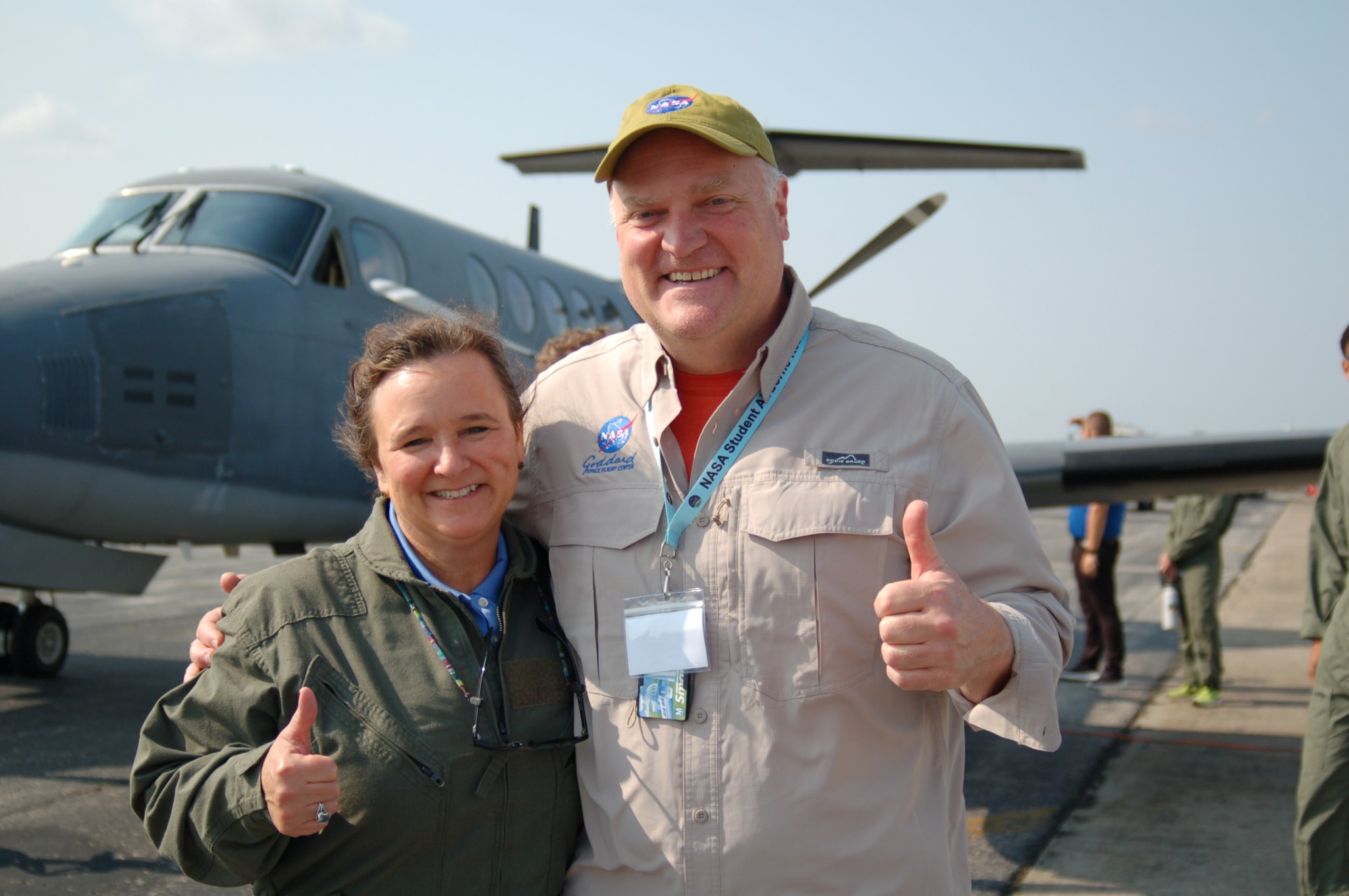 Robert Swap (right) and Karen St. Germain, NASA Earth science director (left) joined NASA’s Student Airborne Research Program, an eight-week summer internship program for rising senior undergraduates during summer 2023. Photo courtesy of Robert Swap What do you do and what is most interesting about your role here at Goddard?
Robert Swap (right) and Karen St. Germain, NASA Earth science director (left) joined NASA’s Student Airborne Research Program, an eight-week summer internship program for rising senior undergraduates during summer 2023. Photo courtesy of Robert Swap What do you do and what is most interesting about your role here at Goddard?
I work with our personnel to come up with the most viable mission concepts and put together the best teams to work on these concepts. I love working across the division, and with the center and the broader community, to engage with diverse competent teams and realize their potential in address pressing challenges in the earth sciences.
Why did you become an Earth scientist?
In the mid to late ’70s, the environment became a growing concern. I read all the Golden Guides in the elementary school library to learn about different creatures. I grew up exploring and discovering the surrounding woods, fields, and creeks, both on my own and through scouting and became drawn to nature, its connectedness, and its complexity. The time I spent fishing with my father, a military officer who also worked with meteorology, and my brother helped cement that love. I guess you could say that I became “hooked.”
What is your educational background?
In 1987, I got a B.A. in environmental science from the University of Virginia. While at UVA, I was a walk-on football player, an offensive lineman on UVA’s first ever post-season bowl team. This furthered my understanding of teamwork, how to work with people who were much more skilled than I was, and how to coach. I received master’s and Ph.D. degrees in environmental science from UVA in 1990 and 1996, respectively.
As an undergraduate in environmental sciences, I learned about global biochemical cycling — meaning how carbon and nitrogen move through the living and nonliving systems — while working on research teams in the Chesapeake Bay, the Blue Ridge Mountains and the Amazon Basin.
Before graduating I had the good fortune to participate in the NASA Amazon Boundary Layer Experiment (ABLE-2B) in the central Amazon, which I used to kick off my graduate studies. I then focused on southern African aerosol emissions, transports and depositions for my doctoral studies that ultimately led to a university research fellow postdoc at the University of the Witwatersrand in Johannesburg, South Africa.
What are some of your career highlights?
It has been a crazy journey!
While helping put up meteorological towers in the Amazon deep jungle, we would encounter massive squall lines. These storms were so loud as they rained down on the deep forest that you could not hear someone 10 feet away. One of the neatest things that I observed was that after the storms passed, we would see a fine red dust settling on top of our fleet of white Volkswagen rental vehicles in the middle of the rainforest.
That observation piqued my interest and led to a paper I wrote about Saharan dust being transported to the Amazon basin and its potential implications for the Amazon, especially regarding nutrient losses from the system. Our initial work suggested there was not enough input from Northern Africa to support the system’s nutrient losses. That caused us to start looking to Sub-Saharan Africa as a potential source of these nutritive species.
I finished my master’s during the first Persian Gulf War, and finding a job was challenging. During that phase I diversified my income stream by delivering newspapers and pizzas and also bouncing at a local nightspot so that I could focus on writing papers and proposals related to my research. One of my successes was the winning of a joint National Science Foundation proposal that funded my doctoral research to go to Namibia and examine sources of aerosol and trace gases as part of the larger NASA TRACE-Southern African Atmosphere Fire Research Initiative – 92 (SAFARI-92). We were based at Okaukuejo Rest Camp inside of Namibia’s Etosha National Park for the better part of two months. We characterized conservative chemical tracers of aerosols, their sources and long-range transport from biomass burning regions, which proved, in part, that Central Southern Africa was providing mineral and biomass burning emissions containing biogeochemically important species to far removed, downwind ecosystems thousands of kilometers away.
When I returned to Africa as a postdoctoral fellow, I was able to experience other countries and cultures including Lesotho, Mozambique, and Zambia. In 1997, NASA’s AERONET project was also expanding into Africa and I helped Brent Holben and his team deploy instruments throughout Africa in preparation for vicarious validation of instrumentation aboard NASA’s Terra satellite platform.
I returned to UVA as a research scientist to work for Chris Justice and his EOS MODIS/Terra validation team. I used this field experience and the international networks I developed, which contributed to my assuming the role of U.S. principal investigator for NASA’s Southern African Regional Science Initiative. Known as SAFARI 2000, it was an effort that involved 250 scientists from 16 different countries and lasted more than three years. When it ended, I became a research professor and began teaching environmental science and mentoring UVA students on international engagement projects.
Around 2000, I created a regional knowledge network called Eastern/Southern Africa Virginia Network and Association (ESAVANA) that leveraged the formal and informal structures and networks that SAFARI 2000 established. I used my team building and science diplomacy skills to pull together different regional university partners, who each had unique pieces for unlocking the larger puzzle of how southern Africa acted as a regional coupled human-natural system. Each partner had something important to contribute while the larger potential was only possible by leveraging their respective strengths together as a team.
I traveled extensively during this time and was supported in 2001 partially by a Fulbright Senior Specialist Award which allowed me to spend time at the University of Eduardo Mondlane in Maputo Mozambique to help them with hydrology ecosystem issues in the wake of massive floods. We kept the network alive by creating summer study abroad, service learning and intersession January educational programs that drew upon colleagues and their expertise from around the world that attracted new people, energy, and resources to ESAVANA. All of these efforts contributed to a “community of practice” focused on learning about the ethics and protocols of international research. The respectful exchange of committed people and their energies and ideas was key to the effort’s success. I further amplified the impact of this work by contributing my lived and learned experiences to the development of the first ever global development studies major at UVA.
In 2004, I had a bad car accident and as a result have battled back and hip issues ever since. After falling off the research funding treadmill, I had to reconfigure myself in the teaching and program consultant sector. I grew more into a teaching role and was recognized for it by UVA’s Z-Society 2008 Professor of the Year, the Carnegie Foundation for the Advancement of Teaching’s Virginia’s 2012 Professor of the Year, as well as my 2014 induction into UVA’s Academy of Teaching — all while technically a research professor. I was also heavily involved for almost a decade with the American Association for the Advancement of Science and its Center for Science Diplomacy and tasks related to activities such as reviewing the Inter-American Institute for Global Change Research and teaching science diplomacy in short courses for the World Academy of Sciences for the Advancement of Science in Developing Countries located in Trieste, Italy, and the Academy of Science of South Africa.
I worked in the Earth Sciences Division at NASA Headquarters from 2014 to early 2017 as a rotating program support officer as part of the Intergovernmental Personnel Act (IPA), where I supported the atmospheric composition focus area. One of my responsibilities involved serving as a United States Embassy science fellow in the summer of 2015, where I went to Namibia to support one of our Earth Venture Suborbital field campaigns. I came to Goddard in April 2017 to help revector their nascent global network of ground-based, hyperspectral ultraviolet and visible instruments known as the Pandora.
What is your next big project?
I am currently working with the NASA Goddard Earth Science Division front office to craft a vision for the next 20 years, which involves the alignment of people around a process to achieve a desired product. With the field of Earth System Science changing so rapidly, we need to position ourselves within this ever evolving “new space” environment of multi-sectoral partners — governmental, commercial, not-for-profit, and academic — from the U.S. and beyond to study the Earth system. This involves working with other governmental agencies, universities and industrial partners to chart a way forward. We will have a lot of new players. We will be working with partners we never imagined.
We need people who know how to work across these different sectors. One such attempt to “grow our own timber” involves my development of an experimental version of the first NASA Student Airborne Research Program East Coast Edition (SARP and SARP-East), where student participants from a diversity of institutions of higher learning can see the power and promise of what NASA does, how we work together on big projects, and hopefully be inspired to take on the challenges of the future. In other words, I am pushing an exposure to field-based, Earth system science down earlier into their careers to expose them to what NASA does in an integrated fashion.
What assets do you bring to the Earth Science Division front office?
In 2020, I came to the Earth science front office to help lead the division. I make myself available across the division to help inspire, collect, suggest, and coach our rank and file into producing really cool mission concept ideas.
Part of why the front office wanted me is because I use the skills of relationship building, community building, and science diplomacy to make things happen, to create joint ventures. Having had to support myself for over 20 years on soft money, I learned to become an entrepreneur of sorts — to be scientifically and socially creative — and I was forced to look inward and take an asset-based approach. I look at all the forms of capital I have at hand and use those to make the best of what I have got. In Appalachia, there is an expression: use everything but the squeal from the pig.
Lastly, I bring a quick wit with a good dose of self-deprecating humor that helps me connect with people.
How do you use science diplomacy to make things happen?
Two of the things that bind people together about science are the process of inquiry and utilizing the scientific method, both of which are universally accepted. As such, they allow us to transcend national and cultural divides.
Science diplomacy works best when you start with this common foundation. Starting with this premise in collaborative science allows for conversations to take place focusing on what everyone has in common. You can have difficult conversations and respectful confrontations about larger issues.
Scientists can then talk and build bridges in unique ways. We did this with SAFARI 2000 while working in a region that had seen two major wars and the system of Apartheid within the previous decade. We worked across borders of people who were previously at odds. We did that by looking at something apart from national identity, which was Southern Africa. We focused on how a large-scale system functions and how to make something that incorporates 10 different countries operate as a unit. We wanted to conduct studies showing how the region operated as a functional unit while dealing with transboundary issues. It took a lot of community and trust, and we began with the science community.
What drives you?
I want to put knowledge into action to make a difference. I realize it is not about me, it is about “we.” That is why I came to NASA, to make a difference. There is no other agency in the world where we can harness such a unique and capable group of people.
What do you do for fun?
I enjoy watching sports. I still enjoy hiking, fishing, and tubing down the river. My wife and I like long walks through natural settings with our rescues, Lady, our black-and-tan coonhound, and Duchess, our long-haired German Shepherd Dog. They are our living hot water bottles in the winter.
My wife and I also like to cook together.
Who would you like to thank?
Without a doubt, it starts with my wife, family, and children whom without none of what I have accomplished would have been possible. I have had the good fortune to be able to bring them along on some of my international work, including to Africa.
I am also very grateful to all those people during my school years who stepped in and who did not judge me initially by my less than stellar grades. They gave me the chance to become who I am today.
Who inspires you?
There is an old television show that I really liked called “Connections,” by James Burke. He would start with a topic, go through the history, and show how one action led to another action with unforeseen consequences. He would take something modern like plastics and link it back to Viking times. Extending that affinity for connections, the Resilience Alliance out of Sweden also influences me with their commitment to showing connections and cycles.
My mentors at UVA were always open to serving as a sounding board. They treated me as a colleague, not a student, as a member of the guild even though I was still an apprentice. That left an indelible impression upon me and I always try to do the same. My doctoral mentor Mike Garstang said that he already had a job and that this job was to let me stand on his shoulders to allow me to get to the next level, which is my model.
Another person who was very formative during my early professional career was Jerry Melillo who showed me what it was like to be an effective programmatic mentor. I worked with him as his chief staffer of an external review of the IAI and learned a lot by watching how he ran that activity program.
With respect to NASA, a number of people come to mind: Michael King, Chris Justice, and Tim Suttles, as well as my South African Co-PI, Harold Annegarn, all of whom, at one time or another, took me under their respective wings and mentored me through the whole SAFARI 2000 process. From each of their different perspectives, they taught me how NASA works, how to engage, how to implement a program, and how to navigate office politics. And my sister and our conversations about leadership and what it means to be a servant leader. To be honest, there are scores more individuals who have contributed to my development that I don’t have the space to mention here.
What are some of your guiding principles?
Never lose the wonder — stay curious. “We” not “me.” Seeking to understand before being understood. We all stand on somebody’s shoulders. Humility rather than hubris. Respect. Be the change you wish to see.
By Elizabeth M. Jarrell
NASA’s Goddard Space Flight Center, Greenbelt, Md.
 Conversations With Goddard is a collection of Q&A profiles highlighting the breadth and depth of NASA’s Goddard Space Flight Center’s talented and diverse workforce. The Conversations have been published twice a month on average since May 2011. Read past editions on Goddard’s “Our People” webpage.
Conversations With Goddard is a collection of Q&A profiles highlighting the breadth and depth of NASA’s Goddard Space Flight Center’s talented and diverse workforce. The Conversations have been published twice a month on average since May 2011. Read past editions on Goddard’s “Our People” webpage.

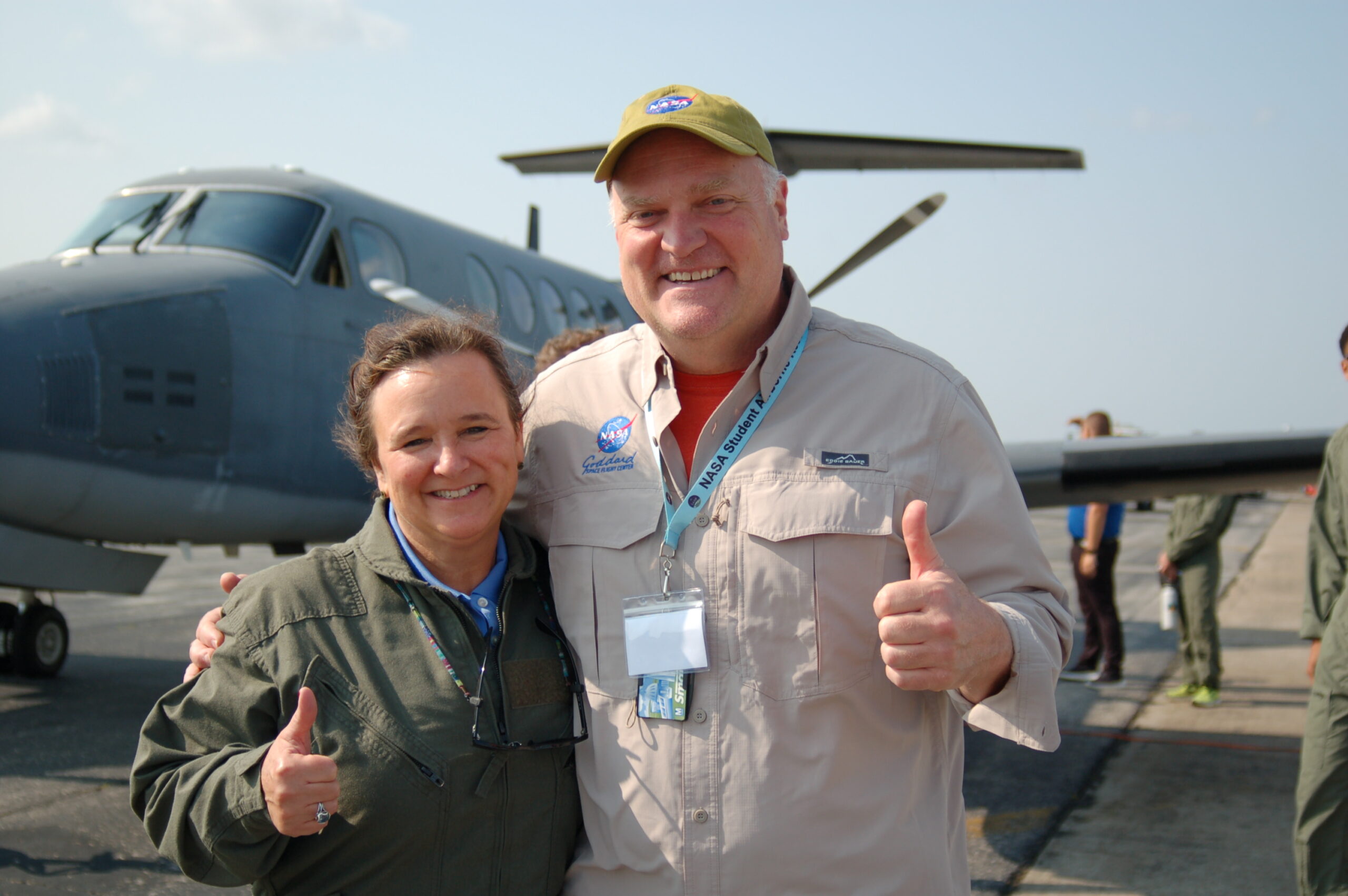
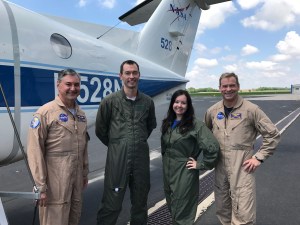 6 min read Matthew Kowalewski: Aerospace Engineer and Curious About Everything Matthew Kowalewski describes himself as “curious about too many things,” but that curiosity comes in…
6 min read Matthew Kowalewski: Aerospace Engineer and Curious About Everything Matthew Kowalewski describes himself as “curious about too many things,” but that curiosity comes in…
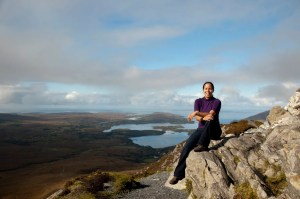 6 min read Inia Soto Ramos, From the Mountains of Puerto Rico to Mountains of NASA Earth Data Dr. Inia Soto Ramos became fascinated by the mysteries of the ocean while growing up…
6 min read Inia Soto Ramos, From the Mountains of Puerto Rico to Mountains of NASA Earth Data Dr. Inia Soto Ramos became fascinated by the mysteries of the ocean while growing up…
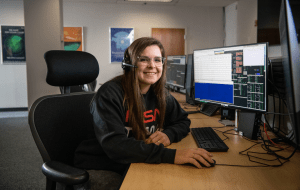 5 min read Carissa Arillo: Testing Spacecraft, Penning the Owner’s Manuals Article 3 weeks ago
5 min read Carissa Arillo: Testing Spacecraft, Penning the Owner’s Manuals Article 3 weeks ago 